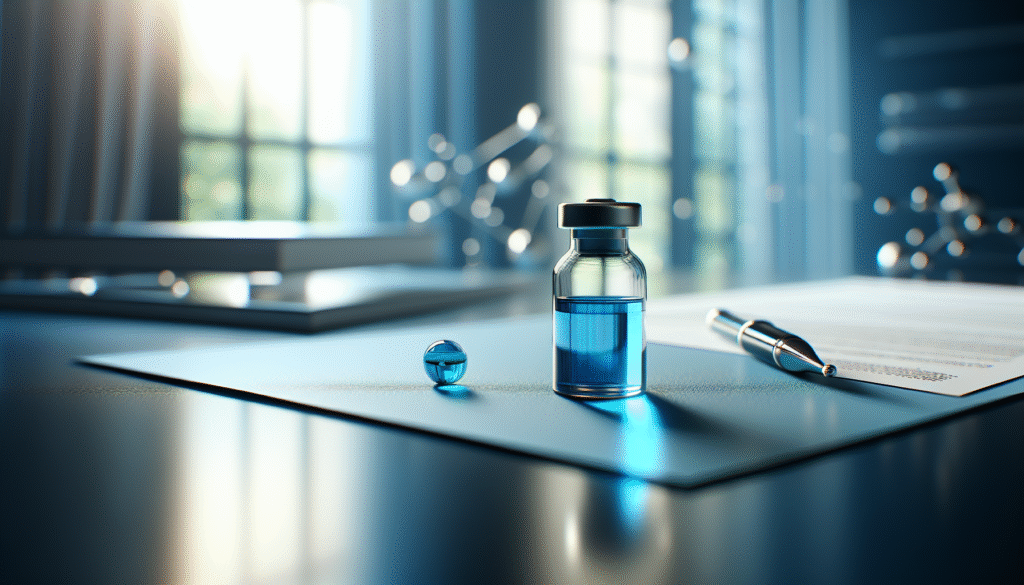
What if a simple dye could be a game-changer for managing ADHD symptoms? This intriguing possibility draws us to Methylene Blue, a compound initially used for its antiseptic properties. As research unfolds, it reveals a deeper potential in addressing symptomatology associated with Attention Deficit Hyperactivity Disorder (ADHD).

Understanding ADHD: A Brief Overview
ADHD is a neurodevelopmental disorder that affects both children and adults. Characterized by inattention, hyperactivity, and impulsivity, ADHD can significantly interfere with daily functioning and overall quality of life. Recognizing the symptoms you exhibit is the first step toward effective management.
The Symptoms of ADHD
The symptoms of ADHD can be categorized into two primary types: inattention and hyperactivity/impulsivity. Below is a comprehensive breakdown.
| Category | Symptoms |
|---|---|
| Inattention | Difficulty sustaining attention, forgetfulness in daily tasks, disorganization, avoidance of tasks requiring prolonged focus. |
| Hyperactivity/Impulsivity | Fidgeting, interrupting others, excessive talking, difficulty waiting for one’s turn. |
Each individual may present these symptoms differently, leading to various challenges in both academic and social settings.
The Role of Methylene Blue
Methylene Blue has garnered attention as a potential treatment modality for several conditions beyond its traditional antiseptic use. Its neuroprotective and cognitive-enhancing properties are particularly noteworthy for those managing ADHD symptoms.
What is Methylene Blue?
Initially developed as a dye, Methylene Blue has demonstrated various medical applications, including as a treatment for methemoglobinemia and as an anti-inflammatory agent. Recent studies suggest its potential for enhancing cognitive function and offering neuroprotection, particularly in models of neurodegenerative diseases.
Mechanism of Action
The effectiveness of Methylene Blue may stem from several mechanisms:
-
Inhibition of Aldose Reductase: This enzyme plays a role in the metabolism of glucose. Methylene Blue’s inhibition of this enzyme could enhance cognitive function.
-
Mitochondrial Support: It facilitates electron transport within mitochondria, improving energy production at the cellular level. Heightened energy metabolism in brain cells may lead to better focus and attention.
-
Antioxidant Activity: Methylene Blue exhibits antioxidant properties that can counteract oxidative stress, a contributor to cognitive decline and attention issues.
These mechanisms suggest a multifaceted approach to how Methylene Blue may help alleviate symptoms associated with ADHD.
Studies on Methylene Blue and ADHD
Despite its potential, clinical research exploring the efficacy of Methylene Blue specifically for ADHD is still in its infancy. However, existing studies provide intriguing insights into its cognitive-enhancing properties.
Current Research Insights
A few key studies illustrate the relevance of Methylene Blue in cognitive enhancement:
-
Cognitive Function Improvement: In a double-blind study, participants receiving Methylene Blue exhibited significant improvements in working memory tasks compared to the placebo group.
-
Focus and Attention: Research has shown that Methylene Blue administration improves attention metrics, suggesting its applicability in managing ADHD symptoms.
-
Animal Studies: Animal models have revealed that Methylene Blue can enhance focus and reduce impulsivity, traits often seen in ADHD.
In considering these studies, it’s essential to approach the findings with caution, as further investigation is needed to establish causation and long-term effects.
Administration and Dosage
Methylene Blue is typically administered orally or intravenously, and its dosing can vary significantly based on the intended application and formulation.
Suggested Dosage Guidelines
Dosage recommendations often depend on individual characteristics such as age, weight, and the specific symptoms being targeted. Current research suggests the following:
| Administration Method | Dosage Range |
|---|---|
| Oral | 0.5 mg/kg to 2 mg/kg daily |
| Intravenous | 1-5 mg/kg in clinical settings for specific conditions |
It is crucial to consult healthcare professionals when considering Methylene Blue as a treatment to determine the appropriate dosage and administration method tailored to your needs.

Side Effects and Considerations
While Methylene Blue shows promise, its usage is not without potential side effects. Understanding these risks is a vital part of any treatment consideration.
Common Side Effects
Possible side effects of Methylene Blue may include:
- Nausea
- Headache
- Dizziness
- Skin discoloration (blue urine or blue skin at high doses)
Precautions
-
Drug Interactions: Methylene Blue can interact with several medications, particularly those that influence serotonin levels. Caution is advised if you take antidepressants or other psychotropics.
-
Pregnancy and Breastfeeding: Limited studies exist on the safety of Methylene Blue during pregnancy and breastfeeding. Engaging in thorough discussions with your healthcare provider is essential.
-
Comorbid Conditions: Individuals with G6PD deficiency or other hemolytic anemia conditions should avoid Methylene Blue due to the risk of hemolysis.
Assessing the benefits against these potential risks is crucial in considering Methylene Blue for ADHD.
Alternative Treatments for ADHD
While Methylene Blue presents an innovative avenue for ADHD management, it is essential to explore its place alongside conventional treatments.
Established Treatment Options
Traditional approaches to manage ADHD often include behavioral therapies and pharmacological interventions. Below is an overview of these methodologies.
| Treatment Type | Description |
|---|---|
| Stimulant Medications | Such as methylphenidate (Ritalin) and amphetamines (Adderall). They generally have quick effects in enhancing focus and a reduction in impulsive behaviors. |
| Non-Stimulant Medications | Atomoxetine (Strattera) and guanfacine (Intuniv) are options for patients who respond poorly to stimulants. |
| Behavioral Therapy | Cognitive Behavioral Therapy (CBT) focuses on developing coping strategies and organizational skills. |
Combining various treatment strategies can often lead to improved outcomes for individuals managing ADHD.
Integrating Methylene Blue into ADHD Management
If you consider incorporating Methylene Blue into your ADHD treatment plan, your approach should be comprehensive and methodical.
Consultation with Healthcare Providers
Prior to making any decisions, engage in thorough discussions with your healthcare provider. They can help you examine:
- The potential benefits of Methylene Blue relative to your specific symptoms.
- Evaluation of current medications and whether Methylene Blue can safely fit into your regimen.
- Monitoring your progress and any side effects throughout your treatment journey.
Supportive Lifestyle Changes
In addition to pharmacological interventions, implementing lifestyle changes can further support your ADHD management.
-
Regular Exercise: Engaging in physical activity can enhance overall cognitive function and emotional regulation.
-
Healthy Diet: Consuming a balanced diet rich in omega-3 fatty acids, vitamins, and minerals can improve brain health.
-
Mindfulness Practices: Techniques such as mindfulness meditation can foster focus and reduce anxiety, common challenges faced with ADHD.
Conclusion
The prospect of using Methylene Blue for managing ADHD symptoms unfolds a compelling narrative, merging established knowledge with innovative possibilities. As you navigate your path toward better management practices, consider how this compound may be integrated into a broader framework of evidence-based care. Understanding its mechanisms, potential side effects, and comparative treatments lays the groundwork for informed decisions.
Always remember that each individual’s experience with ADHD is unique, necessitating personalized approaches. The journey to finding effective management strategies may come with a mix of exploration and consultation. The potential of Methylene Blue remains a promising area of ongoing research, warranting attention as a supplemental treatment in the future.
By remaining proactive in seeking the best methods for your management, you empower yourself not only to handle the challenges of ADHD but also to enhance your quality of life moving forward. As we await further studies and insights, keeping informed will equip you to advocate effectively for your needs in both traditional and emerging areas of treatment.